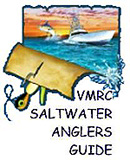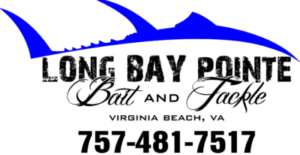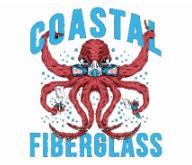
Luke Mooney and a nice Red Drum!
Red and black drum numbers are very good, look for them throughout the lower bay. Anglers have had a lot of success with reds on the shoals near Smith Island. Black drum are also feeding near the eastern shore … both sea-side and bay-side. Another good location to look for them is near the islands of the CBBT.
Large schools of cobia have been cruising the surface along the oceanfront and in the lower bay. Anglers have been sight casting to them. Don’t forget our cobia season dosn’t open until June 1st. It’s a catch and release fishery until then, you can’t harvest them before June 1st. Also, each captain or vessel operator must have a Recreational Cobia Permit from the Marine Resources Commission. You can visit an Authorized Agent to obtain a permit. If you plan to charter a boat for a cobia trip … you better book ASAP!
The spanish mackerel season is off to a great start. Look for them along the Virginia Beach oceanfront from Capy Henry to Sandbridge. Some nice fish have been caught off the Virginia Beach Fishing Pier. Croaker and sea mullet are also being caught by pier anglers.
Sheepsheads and spadefish have arrived. Their numbers will increase in the coming weeks. Sheepshead are feeding along the CBBT and spadefish are showing up at the Chesapeake Light Tower, on buoys and at the CBBT. They will become more aggressive feeders as water continues warming.
Trout, flounder and puppy drum are scattered in our local inlets and tidal rivers.

Outta Line, nice Dolphin, plus a White Marlin and Mako release!
Boats running to the canyon for deep dropping are finding plenty of bluefish, tilefish and grouper. Closer to shore, sea bass fishing has also been very good. Some tuna and dolphin are showing up southeast of Rudee Inlet.
OBX, NC
Surf fishing on the northern beaches has been good for sea mullet, trout and bluefish. Anglers fishing Hatteras Island are catching some nice pompano, bluefish, sea mullet and scattered trout.
Soundside anglers are catching trout on the Little Bridge on the Nags Head/Manteo causeway. A few have been keepers.
The OBX pier fishing rundown goes like this, Avalon: bluefish, spanish, puffers and trout. Nags Head: sea mullet, bluefish, spanish and trout. Jennette’s: blues, a few spanish. Outer Banks: blues and sea mullet.
Boats fishing inshore are finding lots of spanish, bluefish cobia and red drum. Those fishing inside the inlet are finding trout … and sheepshead under bridges.
The offshore fleet has been catching limits of large gaffer dolphin. Yellow fin tuna, big-eye tuna, blue marlin, white marlin and sailfish are in the mix. Sharks are making it difficult to land the tuna.

































 Views Last 7 days : 1772
Views Last 7 days : 1772 Views Last 30 days : 12981
Views Last 30 days : 12981